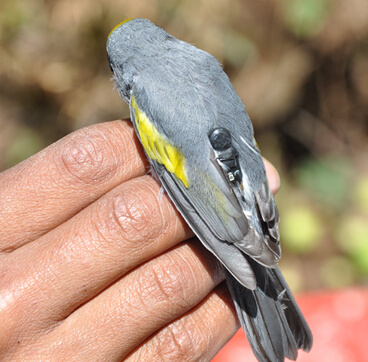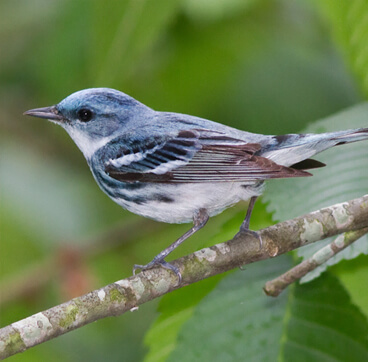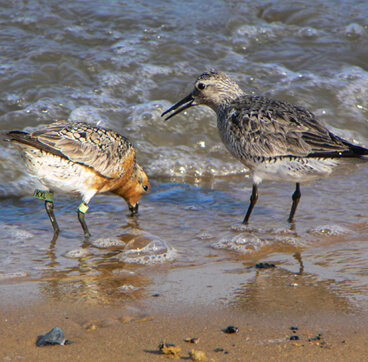Hundreds of bird species flood back and forth between northern breeding grounds and southern wintering areas twice yearly, each a unique circuit of landscape, habitats, and threats. Even now, in the 21st century some of these routes remain unknown, but that is changing.
A range of new technologies is revealing the long-held secrets of bird migration – and not a moment too soon. To succeed in protecting migratory birds across their full annual cycle, we must know all that we can: where birds go, what they do, what they need.
And that is not all: We need unprecedented and comprehensive cooperation among conservation organizations, governments, scientists, birders, citizens, and others to succeed.

Tracking devices are now small enough to be carried on the back of a tiny warbler. To inform conservation actions, we helped coordinate an effort to put geolocators on Golden-winged Warblers in Nicaragua. We’ll work with partners to re-capture the birds and analyze the data next year.

Illustrating the kind of collaboration required to save migratory birds, ABC and its partners advanced forest habitat protection and management in five U.S. states, Colombia, and Ecuador in 2014 to benefit Cerulean Warblers.

A significant wintering population of rufa Red Knots has been identified in northern Brazil, including birds banded in Canada, the United States, Argentina, and Chile. Information being gathered about the birds by our partner Aquasis is filling important gaps in knowledge of the species.

An ABC-organized workshop in Honduras brought together partners from nine countries to identify strategies to protect wintering habitat for Golden-winged Warblers. Among other advancements, the group identified the top 10 threats faced by the species during the nonbreeding season, from cattle grazing to road building.